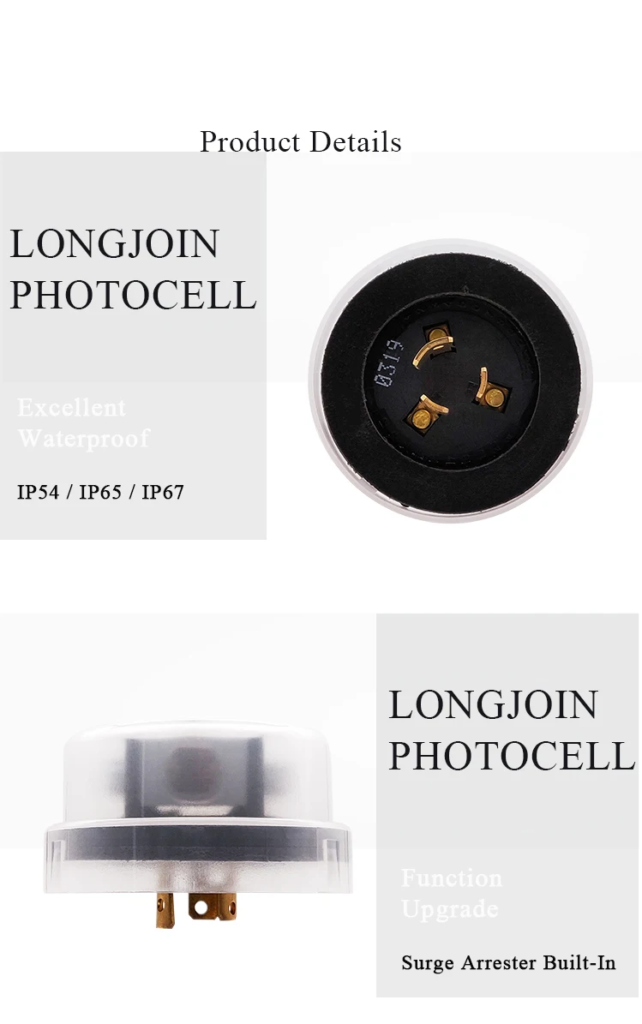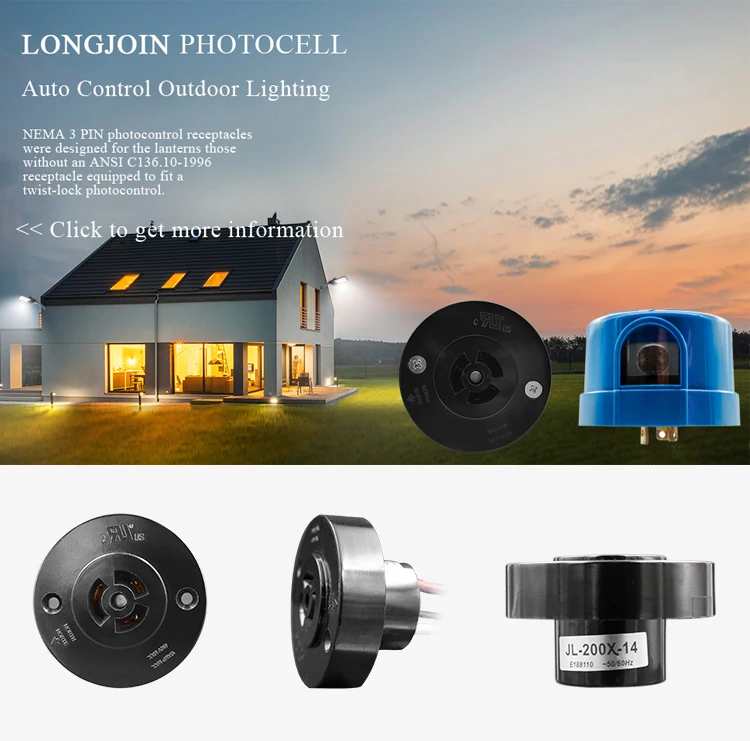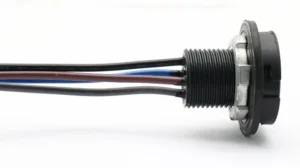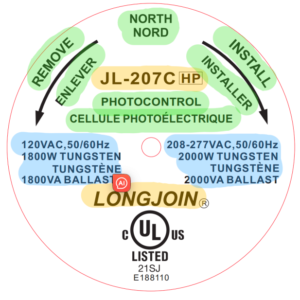The Future of Smart Lighting: Zero Crossing in Photocells for Enhanced Performance and Safety
As the lighting industry continues to evolve, the spotlight is increasingly shifting towards the future of smart lighting technologies. Among these advancements, zero crossing in photocells stands out as a game-changer for enhancing performance and safety.
By synchronizing with the electrical grid’s zero voltage points, photocells equipped with this feature can facilitate smoother transitions in lighting systems, minimizing potential flickering and reducing wear and tear on connected devices.
This article explores the field of smart lighting and delves into the potential of zero crossing technology in photocells. From its impact on energy efficiency to its implications for safety standards, we’ll discover how this innovation is poised to revolutionize the lighting industry, paving the way for more reliable lighting solutions.
How Does Zero Crossing Contribute to the Development of Smart Lighting Systems, Particularly In Terms of Safety And Energy Efficiency?
Zero crossing refers to the precise moment in an AC waveform where the voltage crosses the zero reference point. In AC circuits, this occurs twice per cycle, corresponding to the points where the voltage switches polarity. This phenomenon is crucial in timing control operations within electrical systems.
Safety Implications
In the context of smart lighting systems, zero crossing detection is paramount for enhancing safety. By synchronizing switching operations with zero crossing points, it minimizes the risk of electrical arcing during load connections. This reduces the likelihood of electrical faults, such as short circuits or arc flashes, mitigating potential fire hazards and enhancing overall system safety.
Energy Efficiency Optimization
Zero-crossing detection also plays a pivotal role in optimizing energy efficiency within smart lighting systems. By precisely timing the activation and deactivation of lighting loads to coincide with zero crossing points, it minimizes inrush currents and transient spikes, thereby reducing power consumption and enhancing operational efficiency.
Safety Implications
In the context of smart lighting systems, zero crossing detection is paramount for enhancing safety. By synchronizing switching operations with zero crossing points, it minimizes the risk of electrical arcing during load connections. This reduces the likelihood of electrical faults, such as short circuits or arc flashes, mitigating potential fire hazards and enhancing overall system safety.
Furthermore, leveraging zero-crossing synchronization enables advanced lighting control techniques, such as phase-cut dimming and PWM (Pulse Width Modulation) dimming. These methods allow for precise control over light output levels while minimizing energy wastage, thereby maximizing energy efficiency and reducing overall electricity costs.
Integrated System Benefits
Incorporating zero-crossing detection into smart lighting systems offers a host of integrated benefits. By ensuring safe and efficient operation, it enhances system reliability and longevity, reducing maintenance requirements and associated costs. Additionally, the precise control afforded by zero crossing synchronization facilitates seamless integration with other smart building technologies, enabling comprehensive energy management and optimization strategies.
In conclusion, zero crossing detection serves as a foundational element in the development of smart lighting systems, providing critical safety enhancements and enabling advanced energy efficiency optimization. By leveraging this technique effectively, manufacturers and users can realize significant benefits in terms of safety, energy efficiency, and overall system performance.
What Challenges Do Engineers Face When Implementing Zero Crossing In Photocells Exposed To High Heat?
Temperature Sensitivity
The primary challenge arises from the temperature sensitivity of photocell materials. The semiconductor properties of these materials change significantly with temperature fluctuations, affecting their conductivity and response time. Implementing zero crossing requires consistent performance across a range of temperatures, which necessitates meticulous calibration and compensation strategies to mitigate the impact of temperature coefficient variations.
Thermal Management and Material Selection
Effective thermal management is crucial to maintaining the operational integrity of photocells in high-temperature environments. Engineers must carefully select materials with high thermal conductivity and stability to minimize thermal gradients and prevent material degradation. Additionally, the encapsulation or packaging of photocell assemblies plays a critical role in dissipating heat and shielding sensitive components from thermal stress.
Calibration Challenges
Calibrating photocells for zero crossing detection becomes more complex in high-temperature conditions due to nonlinear responses and thermal drift effects. Traditional calibration techniques may not suffice, necessitating advanced algorithms and sensor fusion methodologies to compensate for temperature-induced variations accurately. Achieving precise and reliable zero-crossing detection under such conditions requires rigorous calibration procedures and sophisticated measurement instrumentation.
Reliability Under Extreme Conditions
Ensuring the long-term stability and reliability of photocells exposed to high heat requires proactive degradation mitigation strategies. Factors such as material aging, junction diffusion, and thermal stress can degrade photocell performance over time, leading to drift in zero crossing detection accuracy. Engineers must employ techniques such as accelerated aging testing, predictive modeling, and adaptive control algorithms to mitigate degradation effects and maintain optimal performance throughout the operational lifespan of the photocells.
Long-Term Stability and Degradation Mitigation
High temperatures pose significant reliability challenges for photocells, including accelerated aging, thermal fatigue, and susceptibility to thermal runaway. Engineers must design robust photocell systems capable of withstanding prolonged exposure to elevated temperatures without compromising performance or longevity. This often involves rigorous reliability testing, simulation analysis, and the integration of protective measures such as thermal insulation and over-temperature detection.
How Are These Challenges Being Addressed?
Though these challenges are common, there are technical solutions employed by engineers to overcome these challenges. Some of these are:
Advanced Material Selection
Engineers explore advanced materials with high thermal stability and resistance to degradation for use in photocell construction. This may involve incorporating heat-resistant coatings, utilizing compound semiconductors, or exploring novel material compositions to enhance durability under high-temperature conditions.
Advanced Material Selection
Engineers explore advanced materials with high thermal stability and resistance to degradation for use in photocell construction. This may involve incorporating heat-resistant coatings, utilizing compound semiconductors, or exploring novel material compositions to enhance durability under high-temperature conditions.
Thermal Compensation Techniques
To mitigate the effects of thermal drift, engineers implement sophisticated thermal compensation techniques in photocell circuit designs. These techniques may involve incorporating temperature sensors to monitor ambient temperature and dynamically adjusting circuit parameters to compensate for temperature-induced variations in component characteristics.
Rigorous Testing and Validation
Engineers conduct comprehensive testing and validation procedures to assess the performance and reliability of photocell systems in high-temperature environments. This includes subjecting photocell prototypes to accelerated aging tests, thermal cycling tests, and real-world simulations to identify potential failure modes and optimize system design for robust operation under extreme conditions.
How Do Zero Crossing Techniques Integrate With Other Smart Technologies To Create Advanced Lighting Solutions That Can Withstand Extreme Conditions?

Zero-crossing techniques play a pivotal role in optimizing alternating current (AC) circuits. In AC circuits, the voltage periodically changes direction, and the zero crossing point marks the instance when the voltage crosses the zero level. This technique is crucial for minimizing electrical noise and interference, thereby enhancing the reliability and longevity of lighting systems.
Integrating zero-crossing techniques with environmental sensors enables dynamic responsiveness to changing conditions. These sensors, which monitor parameters like temperature, humidity, and motion, provide real-time data to the lighting system. Consequently, the lighting system can adjust its parameters, such as brightness and color temperature, to maintain optimal environmental conditions.
By incorporating connectivity features like Wi-Fi or Bluetooth, the lighting system gains remote controllability and integration capabilities. Users can manipulate the lighting settings through smartphone applications or seamlessly integrate them into broader smart home or building automation systems. This connectivity fosters flexibility and ease of management, allowing for precise control and scheduling of lighting operations.
Furthermore, energy efficiency is maximized through intelligent algorithms that optimize lighting patterns based on occupancy and ambient light levels. By dynamically adjusting lighting levels according to real-time demands, these solutions significantly reduce energy consumption and operational costs. Moreover, the implementation of energy-efficient technologies contributes to sustainability efforts and environmental conservation.

At LONG-JOIN, we’re committed to delivering cutting-edge lighting solutions that fuse innovation with reliability. Not only do our wire-in and some upgraded products contain zero-crossing technology, but they also feature surge protection MOV components, ensuring unparalleled performance and durability. Experience the future of lighting by visiting our website at LONG-JOIN and light up your space confidently.
Conclusion
In terms of smart lighting, zero crossing in photocells introduces a new era of performance and safety. By synchronizing with the power supply’s zero-crossing point, these innovative photocells minimize electrical interference, optimizing both functionality and safety. With seamless integration into smart lighting systems, zero-crossing photocells promise enhanced performance and reliability, paving the way for a brighter, safer future in lighting technology.





